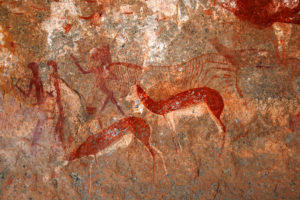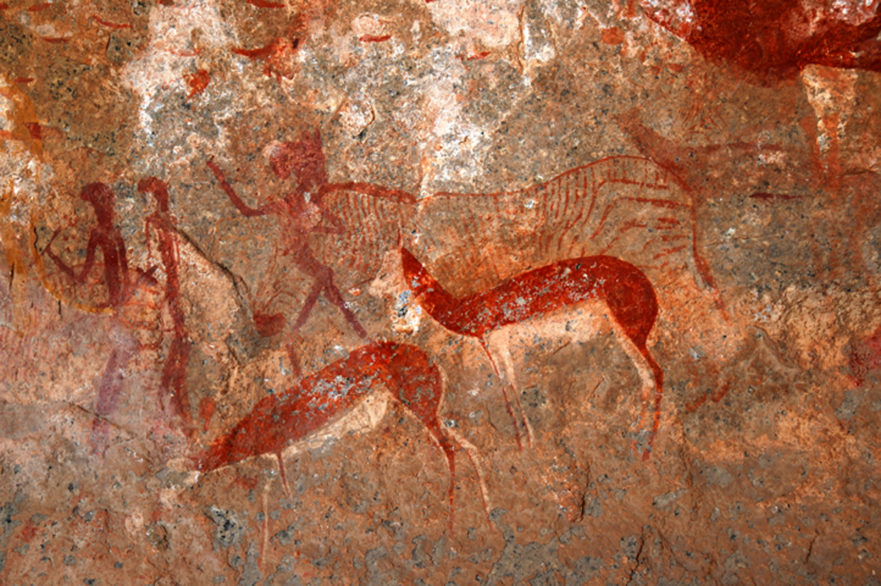 Are you curious about the “Paleo” lifestyle, but not sure how to put it into action? Here are 12 simple steps to get you started.
Are you curious about the “Paleo” lifestyle, but not sure how to put it into action? Here are 12 simple steps to get you started.
#1 SPRINT
Our ancestors performed activities of varying intensities, but their ability to perform high-intensity movements kept them in the evolutionary race.
#2 EAT MEAT
Focus your meals on high-quality animal protein, such as fresh beef, lamb, fish, and poultry. Whenever possible, consume local, grass-fed, free-range, organic, antibiotic, pesticide and hormone-free meat, which has a healthier fat profile.
#3 LIFT
Lift weights using foot-based/full-body, functional movements rather than the traditional approach of isolating muscles on machines. Functional training is the way we move in everyday life and mimics the movement patterns early humans used in their lives.
#4 EAT AN ABUNDANCE OF PLANT FOODS
Wild plants consumed by hunter-gatherers had high micronutrient concentrations. To replicate their diet, eat an abundance of plant foods, such as brightly colored vegetables, berries, and low-glycemic fruit which provide vitamins, minerals, fiber, and phytonutrients.
#5 FOAM ROLL
We have adapted to our sedentary lifestyles by developing restrictions and adhesions in our muscles. Release muscular tension and improve flexibility by a technique known as Self-Myofascial Release. SMR involves finding a painful spot and putting pressure on it using a foam roller to release tension in the muscle and the fascia that surrounds it.
#6 AVOID VEGETABLE OILS
Vegetable oils such as corn, soy, canola, safflower, and sunflower oils are high in the pro-inflammatory omega-6 fatty acid. Omega-6 can also be found in most processed and fried foods because those foods contain vegetable oils.
#7 FAST
Intermittent fasting (IF) can help you lose weight, improve health and increase longevity. It makes perfect sense from an evolutionary point of view. Our Paleolithic ancestors went through regular cycles where food was either readily abundant or extremely scarce.
#8 SUPPLEMENT
Paleo-anthropologists have shown us that the foods our ancestors ate had greater nutrient density, meaning the actual vitamins, minerals and other nutrients contained in the food, when compared to the foods we eat today. To match the nutrient density our early ancestors had, modern humans need to supplement.
#9 STRETCH
Poor postural habits can cause your muscles and the connective tissue that surrounds them to shorten and mold into the positions you maintain throughout your day. Stretching these short, tight muscles helps lengthen the muscle, which then allows the body to realign the soft tissue structures, so it’s a lot easier to maintain good posture.
#10 EAT FRESH RAW NUTS AND SEEDS
Nuts and seeds are a great snack food; they are tasty, easy to carry, and loaded with vitamins and minerals. The best choices are macadamia nuts, almonds, pecans, Brazil nuts, pistachios, walnuts, and hazelnuts, as well as pumpkin, sunflower, and sesame seeds.
#11 PLAY
Our Primal ancestors performed a variety of low-intensity aerobic activities such as swimming, dancing, and hiking for fun. To replicate the low-intensity aerobic activities of ancestral humans, include similar activities in your life, preferably done out of doors.
#12 AVOID GRAINS AND LEGUMES (BEANS)
Almost all grains and legumes contain anti-nutrients, such as lectins which wreak havoc with your hormonal and immune system. Lectins increase intestinal permeability, increasing the risk of inflammatory diseases, such as celiac disease, rheumatoid arthritis, or multiple sclerosis.

